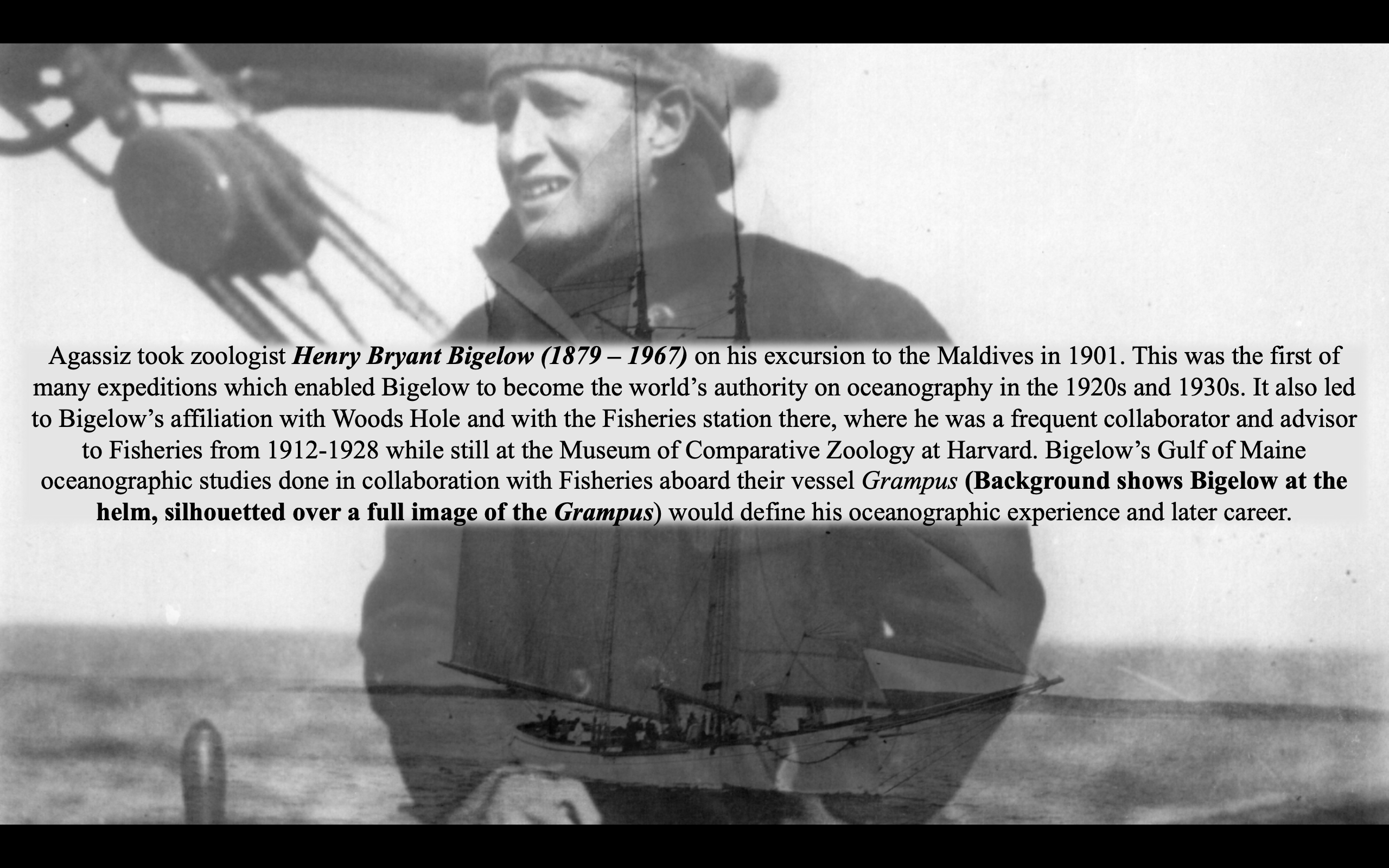150 Years of Woods Hole Science
37

Background image overlay: Henry Bryant Bigelow, on the deck of the Grampus, 1912-1914. Credit: NOAA Fisheries.
Background image: USFC schooner Grampus, Woods Hole, 1902. Credit: NOAA Fisheries.
Both images from NOAA archives gallery at https://apps-nefsc.fisheries.noaa.gov/rcb/photogallery/assorted.html
References:
Burstyn, H.L., 1980. Reviving American oceanography: Frank Lillie, Wickliffe Rose, and the founding of the Woods Hole oceanographic institution. In Oceanography: the past (pp. 57-66). Springer, New York, NY.
p. 61:
“Though marine biology was only the third of the areas of research suggested by Lillie to Rose in June 1924, it was closer to Rose’s concern for fisheries than the others. Rose began to concentrate on fisheries after a visit to him in 1925 by two of Lillie’s friends from Woods Hole, Willis H. Rich, Director of the Bureau of Fisheries Laboratory that had established Woods Hole as a scientific center, and Henry B. Bigelow, a student of Alexander Agassiz who had continued at the Agassiz Museum the program of oceanographic research begun by his teacher. Bigelow’s studies in the Gulf of Maine provided the only substantial American contribution to the oceanography of the North Atlantic that was made in the 1920s. Now his cruises had come to an end, for the miserly response of the Coolidge administration to growing American prosperity had been to refuse to repair the aging fisheries vessel Albatross. It had been sold late in 1924; Bigelow, the leading American oceanographer on the east coast, was without the means to go to sea.”
Galtsoff, P.S., 1962. The story of the bureau of commercial fisheries, Biological Laboratory, Woods Hole, Massachusetts (Vol. 145). US Department of the Interior, Bureau of Commercial Fisheries.
p. 80:
”In the years between 1912 and 1928, a great deal of research in oceanic fisheries was conducted for the Bureau of Fisheries by Henry B. Bigelow of Harvard University…Although not employed by the Bureau, he was a frequent visitor to the Fisheries Station and exerted a great deal of influence on the type of research conducted by the Bureau.”
Redfield, A.C., 1879. Henry Bryant Bigelow. Biographical Memoirs, National Academy of Sciences, 48(51-80).